
Sign up for a tanning membership at any salon across the country, and you can be sure that the sales associate will ask if you want goggles for your eyes. Tanning beds are infamous for their damaging ultraviolet, or UV, rays, and many states have enacted legislation dictating what tanning salons must provide for their customers. According to the National Council of State Legislatures, nine states require their tanning salons to provide free eye protection while 15 others require that their salons not only offer free eye protection, but that the salons also make it a requirement that their customers wear goggles. Turns out the UV rays are much more damaging to your eyes than to your skin, and in a tanning bed, not even closing your eyes can protect your vision.
Significance
According to the Health Physics Society, your eyes are especially prone to damage from tanning bed use. In fact, research shows that, in a tanning bed, ultraviolet radiation exposure to the eyes reaches up to 100 times greater than from the sun. The Health Physics Society says outside in the sun, your eyebrows shield your eyes somewhat from the sun's damaging rays, but in a tanning bed, UV radiation has near direct contact with your eyes. Closing your eyes, wearing sunglasses or using any type of protection other than the recommended goggles from the salon is not sufficient to prevent damage, reports the Health Physics Society.
Effects
The FDA lists photokeratitis and cataracts as the two most common eye damage conditions associated with an overabundant amount of UV radiation exposure. Photokeratitis is most often reported during the winter months in high altitudes, where snow reflects UV radiation into the eyes. More recently, however, according to the FDA, cases have been reported from exposure to certain types of tanning lamps. Photokeratitis is only a short-term issue that involves eye tearing, pain, swelling of the eyelid, hazy or decreased vision and a feeling of having sand in your eye. Cataracts, on the other hand, involve actual damage to the eye through clouding of the eye's natural lens, causing blurry vision or blindness. The FDA also mentions macular degeneration and eye cancers caused by UV radiation such as pterygium.
Treatment
Photokeratitis, believed to be a sunburn on the eye, according to the FDA, can easily be cured with a topical solution provided by a doctor. Cataracts, however, require a surgical procedure. According to MedlinePlus, there is no permanent cure for macular degeneration, and pterygium that begins to block vision requires surgery.
Prevention
The Health Physics Society says it is imperative that you wear proper protective eye gear while in a tanning bed to prevent short- or long-term eye damage. The tanning goggles offered and sold at tanning salons are good for multiple uses and for as long as the protective film on the eye holes remains intact. If you are in a state that does not require its tanning salons to offer goggles, you can purchase them online.
Types
Tanning goggles come in multiple colors and shapes and include an attachable strap for proper wear. It is important to find a pair that fit well and are not cracked. For typical tanning beds, in which you are lying down, it is not necessary to attach the included strap. You may just simply place the goggles snugly over you eyes. In stand-up tanning beds, however, you will need to attach the strap to ensure that the goggles stay in place.
Related Articles

Tanning Beds and Eye Disorders
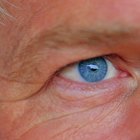
Do People With Blue Eyes Need to Wear ...

Dangers of Spray on Tan

Sunbed Pros & Cons

How Do Yellow Lenses in Ski Goggles ...

The Maui Jim Warranty Policy

Bungee Jumping Locations in South ...

Levels of Polarized Sunglasses

Does a Married Woman Need Her Husband's ...

Bronzer Vs. Turbo Tanning Bed

The Best Photochromic Sunglasses

Does Tanning Help Cellulite?
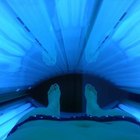
How to Not Get Tan Lines in Tanning Beds
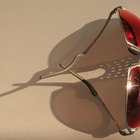
The Effects of Red Lens Sunglasses

Bungee Jumping Near Phoenix, AZ

How to Repair a Skagen Crystal
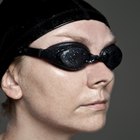
How to Wear Swimming Goggles

How Many Times Should I Tan in a ...
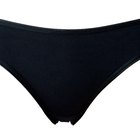
How to Use Panty Liners

Why Is UV Light Bad for Your Skin?
References
Writer Bio
Tracey Wallace began her writing career in 2007 as an op-ed columnist and literary reviewer. She has since gone on to write beauty and fashion advice for NaturallyCurly.com, ELLE.com, Time Out New York, Birchbox.com, YouBeauty.com and Shoptiques.com. She is passionate about women's rights and all of her work includes inspirational and empowering advice and tips for women to encourage them to follow their dreams and stay true to themselves.
Photo Credits
sexy tanning image by Alfonso d'Agostino from Fotolia.com